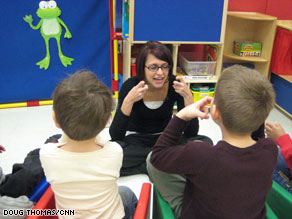
By Colleen Wixon
ST. LUCIE COUNTY — The teacher who orchestrated a vote to oust 5-year-old Alex Barton from his kindergarten classroom lost her appeal for reinstatement.
Administrative law judge Claude Arrington upheld the St. Lucie School Board’s decision to suspend Wendy Portillo for a year without pay and remove her tenure.
Schools Superintendent Michael Lannon, who testified at the hearing that he would not recommend she be allowed to teach in a district elementary school, said he had not yet read through the order and declined to comment.
Portillo’s attorney, David Walker of Stuart, also said he had no comment at this time.
The school district proved Portillo violated the state’s code of ethics for teachers and school board rules in the May 21 incident, in which she asked students to say whether Alex should be in the classroom while she tallied the votes on a board, Arrington said in his order.
The judge also sided with the district’s assertion that Portillo exposed Alex and the other students to "unnecessary embarrassment or disparagement" and used an inappropriate method of discipline, Arrington said in his order. She also failed to exercise the best professional judgment and failed to make a reasonable effort to protect Alex from harassment, he said.
Arrington said in his order that, except for last year’s incident, Portillo was a dedicated and excellent teacher over her 12-year career in St. Lucie County. Many of Morningside’s teachers and parents support her and her reputation remains intact despite the negative publicity of the voting incident, the judge wrote in the order.
"There can be little doubt that (Portillo) has been traumatized by the negative reactions to her misconduct. (Portillo) and her family have suffered economically as a result of her suspension," Arrington wrote in the order.
Wendy Portillo testifies in hearing (video): http://www.tcpalm.com/videos/detail/...ifies-hearing/
Wendy Portillo describes "vote-out" incident (video): http://www.tcpalm.com/videos/detail/...-out-incident/
Source: http://www.tcpalm.com/news/2009/mar/...spension-loss/
Please share this news with friends, family and also with your contact list on Facebook and MySpace.

















